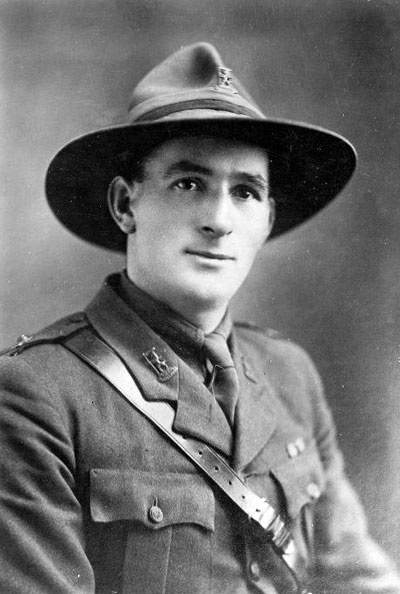
Samuel Frickleton VC, about 1918.
A rifleman in the 3rd Battalion of the New Zealand Rifle Brigade, Samuel Frickleton took part in the attack at Messines on 7 June 1917. Following the detonation of mines, the New Zealanders advanced up the ridge and into the town. Frickleton’s battalion was held up on the outskirts of Messines village by several machine-guns firing from the other side of the artillery barrage. With his company suffering heavy casualties, Frickleton (himself slightly wounded) decided to take care of the guns himself.
Calling his section to follow him, Frickleton advanced through the barrage to one of the machine-gun posts. The smoke and noise of the shelling concealed his approach until the last moment. He lobbed in a grenade, rushed the post and killed those inside. With his comrades providing covering fire, he then rushed a second machine-gun post some 25 metres away, killing its crew and destroying the gun.
Other NZ VC recipients who fought in Belgium
Frickleton then led his men through the village, clearing out Germans lodged in the ruins and other prepared positions. Wounded a second time, he was carried from the battlefield and later evacuated to England. He was awarded the Victoria Cross for his courageous leadership – 'By the destruction of these two guns,' the citation read, 'he undoubtedly saved his own and other units from very severe casualties'.
Frickleton returned to New Zealand in June 1918 to a welcome from the mayor of Auckland 'attended by thousands of citizens who showed the greatest enthusiasm'. The Auckland Weekly News reported that 'Frickleton, who was given a tremendous reception, was carried shoulder high to his car amid cheers from the crowd.' His Victoria Cross is displayed at the Army Museum in Waiouru.


Community contributions